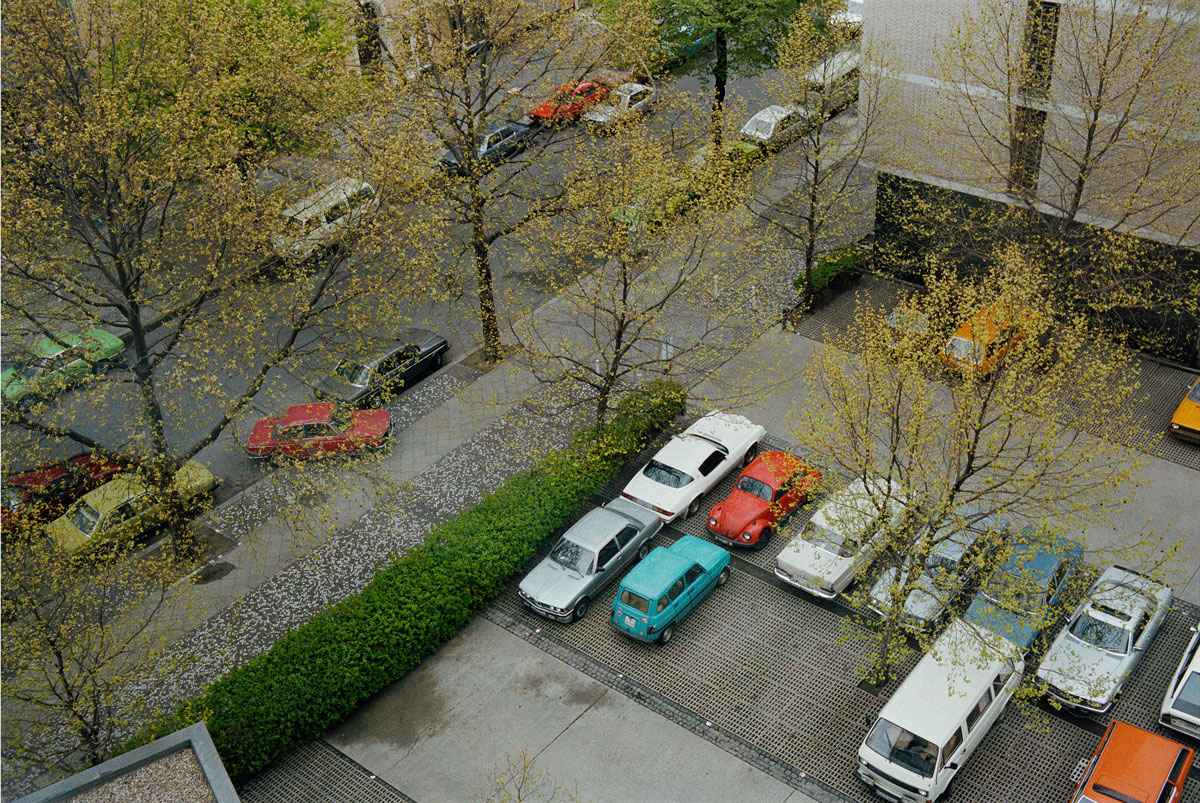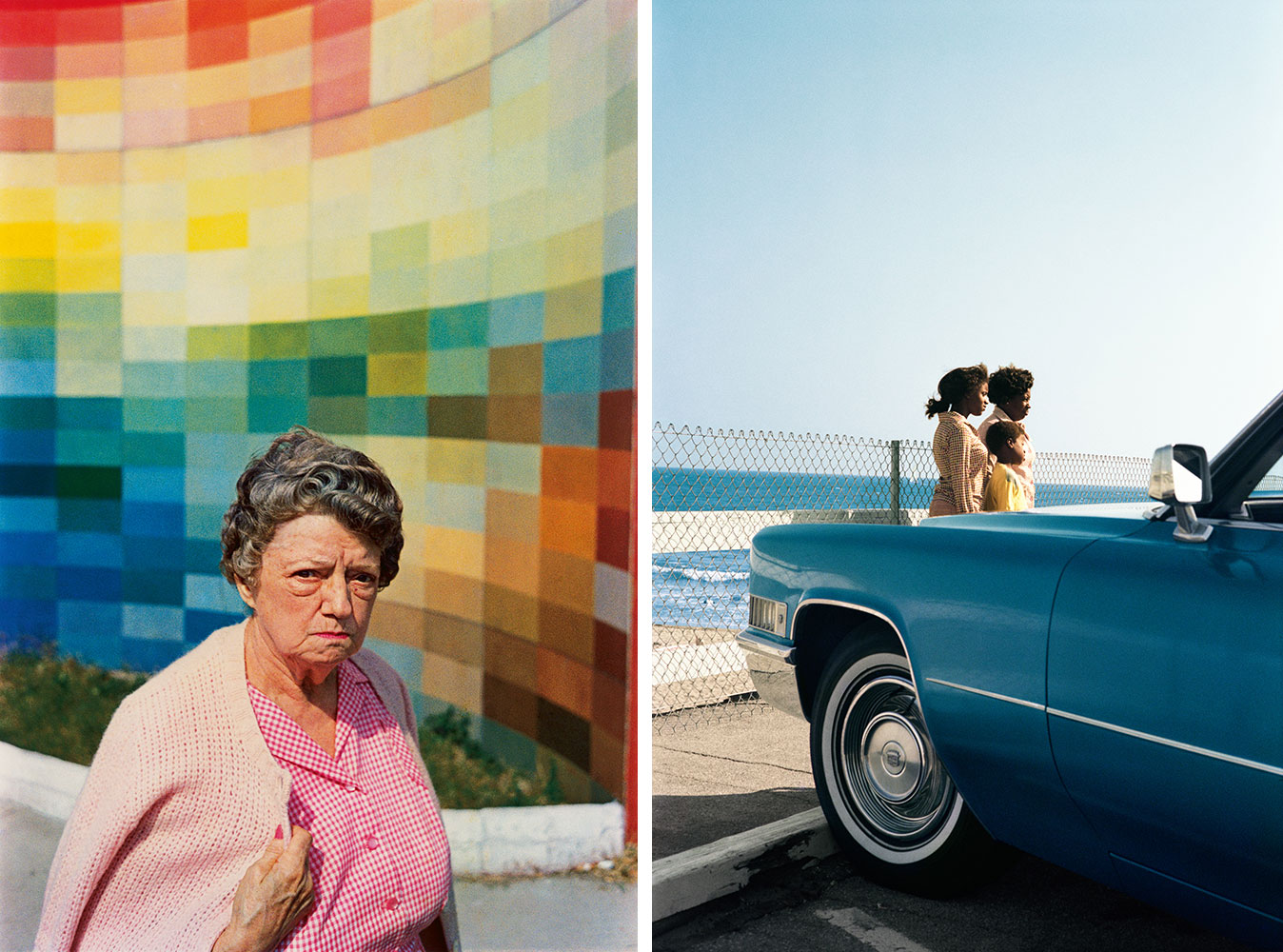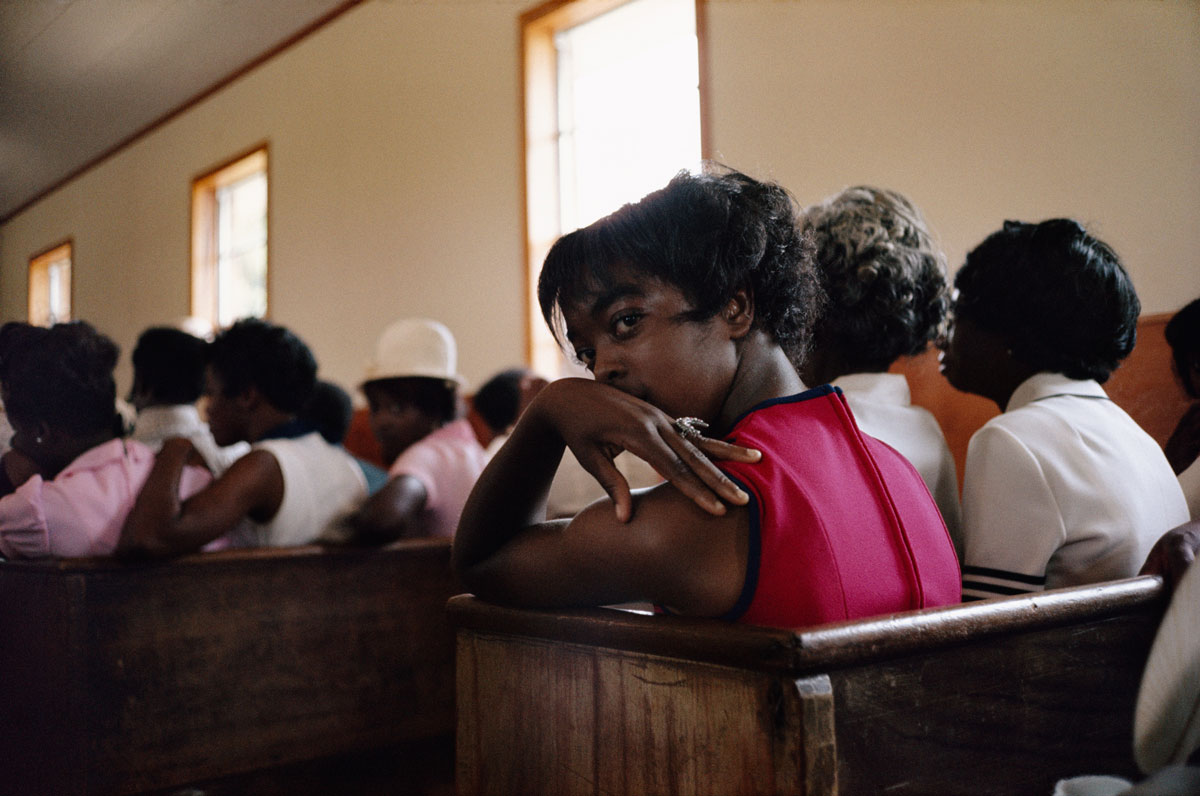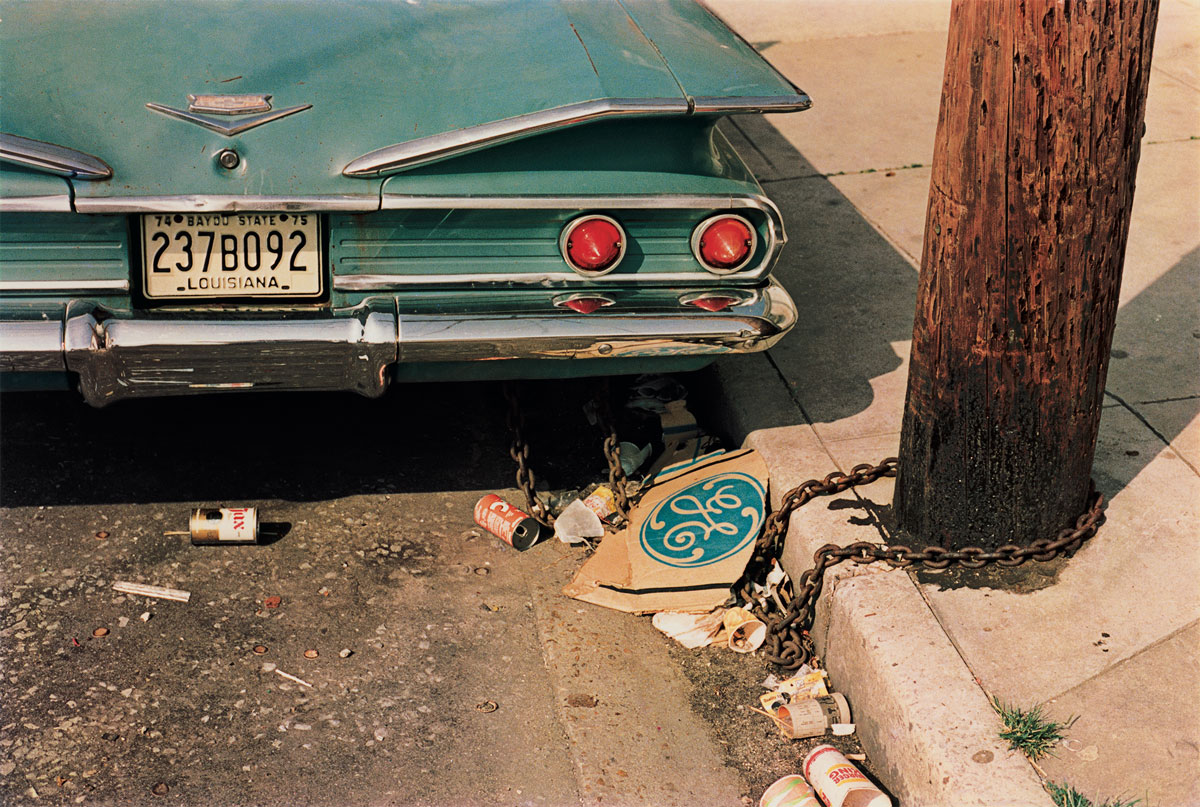PHOTO: William Eggleston-Mystery of the Ordinary
 In a career spanning over five decades, William Eggleston has come to be recognized for almost single-handedly elevating color photography to the status of fine art. Along with Stephen Shore and Evelyn Hofer, Eggleston was one of the first photographers to recognize the distinctive power of color and its unique capacity to create pictures that continuously challenge the everyday.
In a career spanning over five decades, William Eggleston has come to be recognized for almost single-handedly elevating color photography to the status of fine art. Along with Stephen Shore and Evelyn Hofer, Eggleston was one of the first photographers to recognize the distinctive power of color and its unique capacity to create pictures that continuously challenge the everyday.
By Dimitris Lempesis
Photo: C/O Berlin Archive
In William Eggleston’s retrospective “Mystery of the Ordinary” in addition to presenting famous series like “Los Alamos”, the exhibition also contains works that have never been seen before, including pictures from the series “The Outlands” and images taken in Berlin between 1981 and 1988. In his early work, Eggleston was influenced by the works of Walker Evans and Henri Cartier-Bresson, both of whom established the narrative, documentary image as a subject. Initially working in black and white yet his use of color meant he quickly established a very different emphasis, in which emotion-laden imagery of the former was as alien as the decisive moment of the latter. Eggleston did not elevate, and he was not interested in freezing moments in time. Rather, time seems to have been standing still far before he arrived and took his photograph. He was uninterested in irony and knowingness. Instead, his photographs merge to form a visual tale of decay. The exhibition is both a monograph and a retrospective. It brings together crucial elements in Eggleston’s work, which he refined during his many stays in Europe, particularly in Berlin. The following series are shown: BEFORE COLOR: Before and at the same time William Eggleston worked in black and white and color. The exhibition offers for the first time the opportunity to see the results of the wor-king methods opposite. The pictures were taken from the mid 1960s to the early 1970s. The works are printed later. LOS ALAMOS: While driving through New Mexico in 1973, William Eggleston stopped at Los Alamos, the forested site of the atomic bomb’s clandestine development. He chose Los Alamos as the title for a sprawling body of work then nearing completion: approximately twenty-two hundred images photographed between 1966 and 1974. This title cloaks with some irony Eggleston’s ostensible subjects, found in a vast American terrain, yet acknowledges his belief in the aesthetic consequences of his private quest. The photographs that make up this selection from Los Alamos begin at the beginning, with the first color photograph Eggleston made, of a grocery clerk pushing a shopping cart; include the center of his world: Memphis and the Mississippi Delta; trace his travels west from New Orleans to Las Vegas and southern California; and end on the Santa Monica Pier. DEMOCRATIC FOREST: Eggleston was in Oxford, Mississippi, for a few days and he was driving out to Holly Springs on a back road, stopping here and there. It was the time of year when the lands-cape wasn’t yet green. he left the car and walked into the dead leaves off the road. It was one of the occasions when there was no picture there. It seems like nothing, but of course there was something for someone out there. I started forcing myself to take pictures of the earth, where it had been eroded thirty or forty feet from the road. There were a few weeds. he began to realize that soon I was taking some pretty good pictures, so he went further into the woods and up a little hill, and I got well into an entire roll of film.
THE OUTLANDS: is a finale of a long process, is, in fact, drawn from where it all started, from the chromes or color transparencies, made between 1969 and 1974, that Eggleston showed John Szarkowski, the Director of the Department of Photogra-phy at the Museum of Modern Art in New York, and from which Szarkowski drew the work from William Eggleston’s Guide in 1976. Both controversial and ground-breaking, Szarkowski’s selection remains revealing forty-five years later. Edited in 2020 just before the pandemic by Mark Holborn, the sons William and Winston Eggleston looked deep into the archive and projected the images onto a large screen—as many years ago John Szarkowski did Kodachrome slide carousels overseen by the artist. The seriess turns back to the beginning, looking deeply in the geographical situation around Memphis, Tennessee. The result is revelatory. Starting at almost the exact point on the same street in suburban Memphis where Eggleston famously photographed the tricycle, the work follows a route through the back roads to old Mississippi where he was raised. What is disclosed is a sublime use of pure color hovering in semi-detachment from the forms he records. At the time, Eggleston was photographing a world that was already vanishing. Today, this final installment of his color work offers a view of a great American artist discovering the range of his visual language and an unforgettable document of the Deep South in transition. BERLIN: Since the late 1970s William Eggleston, like many other photographers, had paid regular visits to Berlin, where he taught at the Werkstatt für Photographie initiated by Michael Schmidt. With his camera in hand, he explored the city as a flaneur and photographed the Reichstag, the Brandenburg Gate, and the ruins of the Museum of Decorative Arts (now the Gropius Bau). All these prominent buildings, which at the time were located directly on the border between West and East Berlin, had been at the center of the city before the war and were indicative of Berlin’s stature before 1945. Eggleston approached these places in a new way: his pictures are fragmented, seen from unusual angles and perspectives, with a fundamental interest in the historic significance of Berlin as the city on the front line of the Cold War. Eggleston’s fascination with cultural codes is apparent in his numerous photo-graphs of buildings and ruins, as well as neon signs, lettering, and billboards that played a role in his early work in the United States around 1970. Perspectives of façades seen from below and his interest in colored elements—particularly graffiti on the Berlin Wall—are aspects that permeate Eggleston’s oeuvre. From his base in Berlin, Eggleston took trips to Austria and Switzerland, spreading his ideas about color photography throughout Europe in the early 1980s. The images were originally published in “The Democratic Forest” in 1989 under the title “Kiss me Krakow”.
Photo: William Eggleston, Untitled, c. 1983-1986, © Eggleston Artistic Trust. Courtesy Eggleston Artistic Trust and David Zwirner
Info: C/O Berlin Foundation, Amerika Haus. Hardenbergstraße 22-24, BerlinGermany, Duration: 27/1-28/5/2023, Days & Hours: Daily 11:00-20;00, https://co-berlin.org/

Right: William Eggleston, Untitled, 1971–1974, © Eggleston Artistic Trust. Courtesy Eggleston Artistic Trust and David Zwirner




